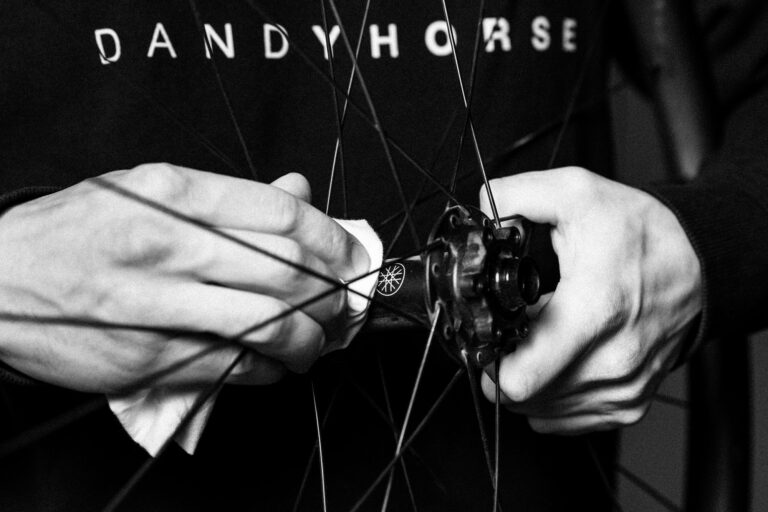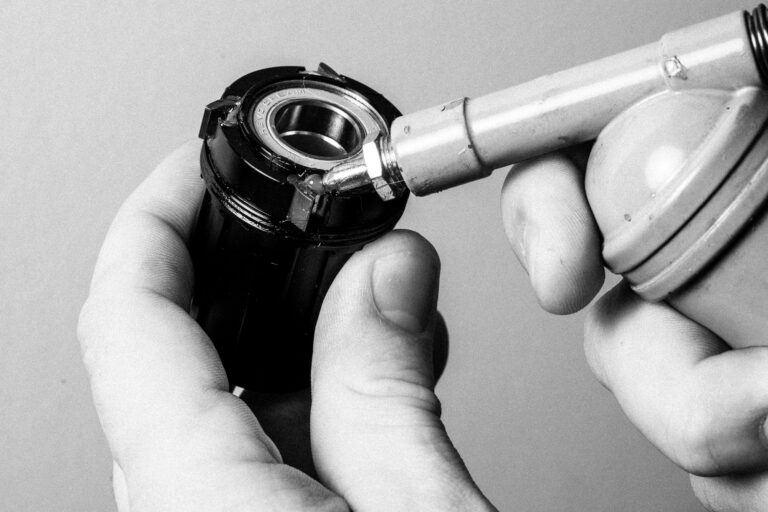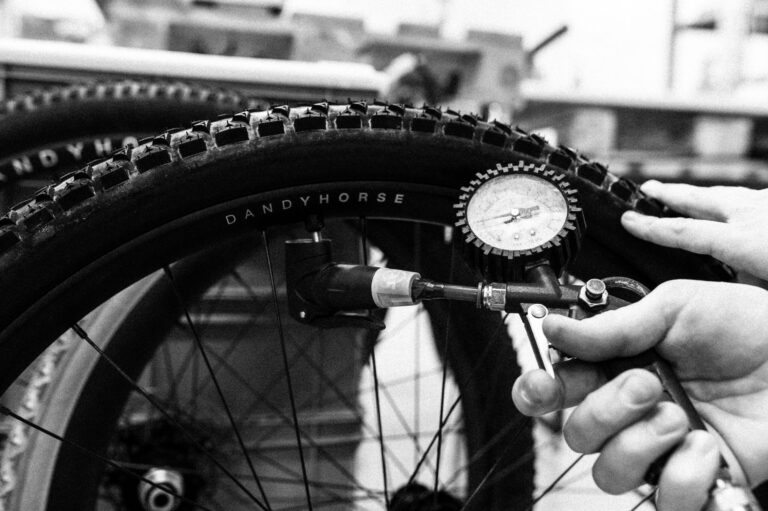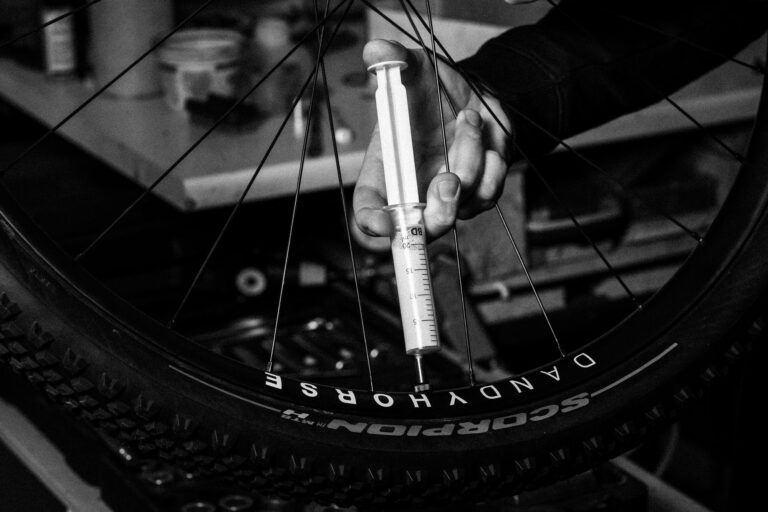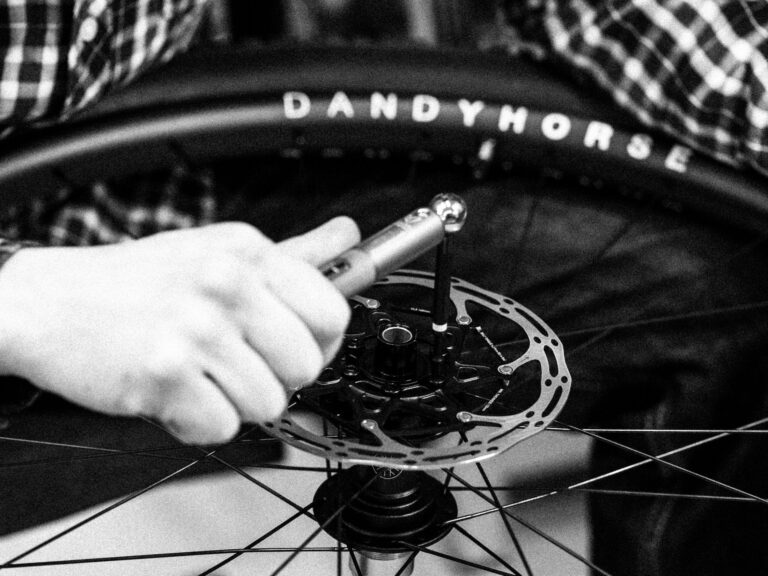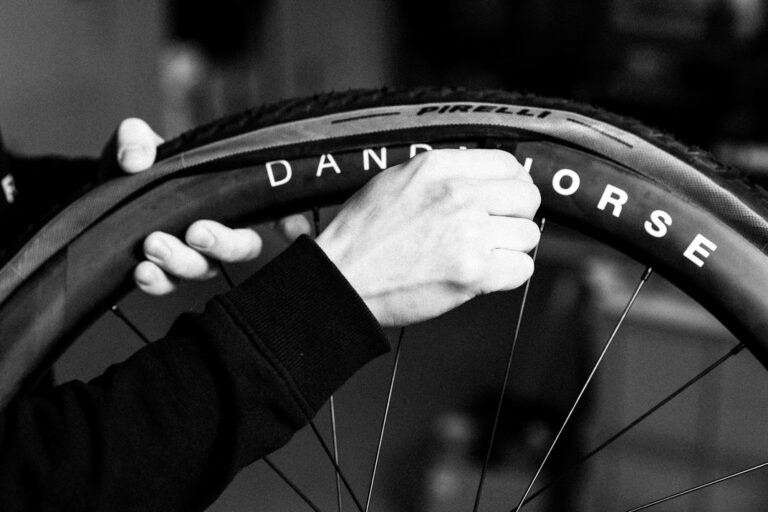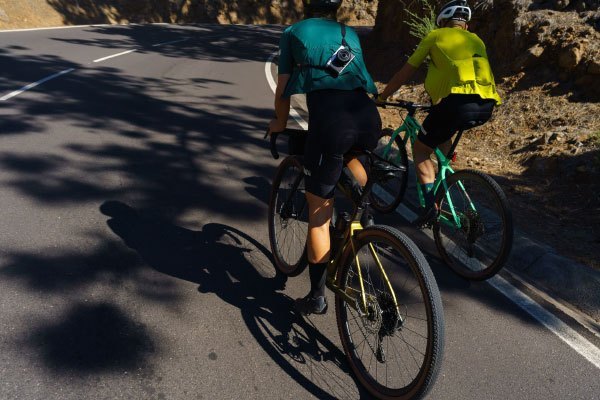02.
The wheels must be inspected at least once a year.
As part of the inspection, the following should be checked: lateral and radial runout, wheel dish, condition of bearings and spoke tension using a precise tensiometer. In addition, the grease in the coupling mechanism should be replaced at least once a year. You should service the hub more often in wheels that have come into contact with water.
03.
Tires or tubulars must be inflated using a pressure gauge pump.
The optimal air pressure consists of the maximum pressure for the rim, the minimum and maximum pressure provided by the tire manufacturer, the weight of the user, the type of surface and the type of rim (hookless/hooked). The maximum pressure for each set can be found in the technical parameters table in the online store and in the wheel passport.
